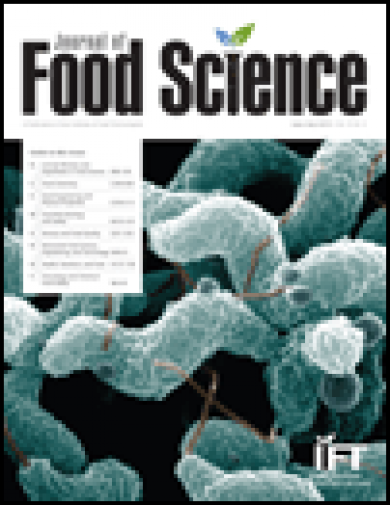Abstract
Clear noodles were prepared from starches of 3 edible canna cultivars namely; Thai-purple, Thaigreen, and Japanese-green. The effects of amount of gelatinized starch, moisture content of dough, and holding temperature after cooking on noodle appearance were investigated. Ten percent gelatinized starch, 55% moisture content, and holding temperature at 4°C for 24 h gave clear noodles with appearance, cooking loss, and rehydration ratio comparable to commercial mung bean noodles. However, the canna noodles were of inferior tensile strength. Moisture content of the canna noodles was 15.24% to 15.46%. Their chemical compositions on dry weight basis were as follows: 89.41% to 91.63% starch, 0.21% to 0.33% protein, > 0.01% lipid, 0.16% to 0.20% ash. Measured diameters of noodles were in the range of 0.73 to 0.88 mm. The cooking losses were 0.93% to 0.55% dry weight, whereas tensile stresses were 17.44 to 22.77 g/mm2. The energy values derived from 100 g of canna noodles were 358.48 to 367.84 kcal. Sensory evaluation by descriptive test revealed that there were no significant differences (P ≤ 0.05) in the general acceptability between the canna noodles and the commercial mung bean noodles. By paired-comparison test, however, the commercial mung bean noodle A was more favorable.
Keywords
Canna starch; Noodle; Clear noodle; Properties; Sensory





